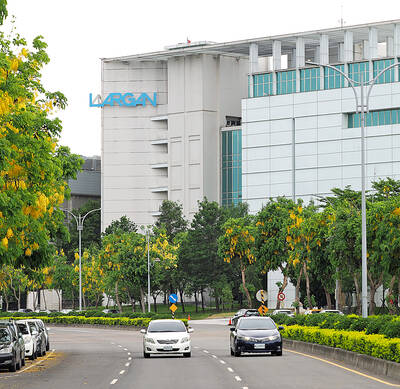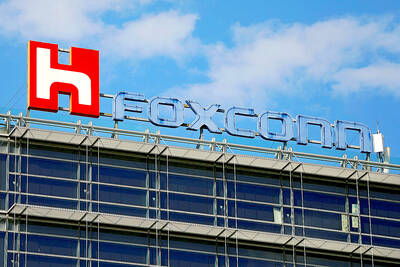State-run Taiwan Power Co (Taipower, 台電) is building Asia’s first “virtual power plant,” which would be capable of producing 15 megawatts of electricity per second, the company said yesterday.
The project is expected to come online partially as early as the end of this year, Taipower said in a statement.
A virtual power plant is a network of decentralized units that can aggregate and distribute power as supply and demand fluctuate. Virtual power plants already operate in the US, Europe and Australia.
Virtual power plants create power by storing excess production from solar and wind plants and distributing it when needed, Taipower manager Chang Ting-shu (張廷抒) said.
“If you save some electricity that would have been wasted, that is equivalent to generating that amount of electricity,” Chang said.
The output of solar and wind farms depends on environmental factors rather than demand, and the issue is growing in significance as Taiwan aims to increase the percentage of green power it uses to 20 percent by 2025, Chang said.
“The sun does not shine at night, but you still need power,” he said.
Through a competitive bidding process, Taipower has distributed the project among five Taiwanese companies, which would use batteries from Tesla Inc and Samsung Electronics Co as well as Taiwan’s E-One Moli Energy Corp (能元科技), Taipower said.
The contractors would combine the batteries with automatic frequency control equipment to create systems that would connect to Taipower’s electricity grid to create the virtual power plant, it said.
Taipower historically held a monopoly on power production until 1994, when independent power producers were allowed to join the market. The market was further liberalized in April last year when the Renewable Energy Act (再生能源發展條例) was amended, allowing green energy to be directly traded from independent producers to other businesses.

Taiwan’s foreign exchange reserves hit a record high at the end of last month, surpassing the US$600 billion mark for the first time, the central bank said yesterday. Last month, the country’s foreign exchange reserves rose US$5.51 billion from a month earlier to reach US$602.94 billion due to an increase in returns from the central bank’s portfolio management, the movement of other foreign currencies in the portfolio against the US dollar and the bank’s efforts to smooth the volatility of the New Taiwan dollar. Department of Foreign Exchange Director-General Eugene Tsai (蔡炯民)said a rate cut cycle launched by the US Federal Reserve

Handset camera lens maker Largan Precision Co (大立光) on Sunday reported a 6.71 percent year-on-year decline in revenue for the third quarter, despite revenue last month hitting the highest level in 11 months. Third-quarter revenue was NT$17.68 billion (US$581.2 million), compared with NT$18.95 billion a year earlier, the company said in a statement. The figure was in line with Yuanta Securities Investment Consulting Co’s (元大投顧) forecast of NT$17.9 billion, but missed the market consensus estimate of NT$18.97 billion. The third-quarter revenue was a 51.44 percent increase from NT$11.67 billion in the second quarter, as the quarter is usually the peak

Nvidia Corp’s major server production partner Hon Hai Precision Industry Co (鴻海精密) reported 10.99 percent year-on-year growth in quarterly sales, signaling healthy demand for artificial intelligence (AI) infrastructure. Revenue totaled NT$2.06 trillion (US$67.72 billion) in the last quarter, in line with analysts’ projections, a company statement said. On a quarterly basis, revenue was up 14.47 percent. Hon Hai’s businesses cover four primary product segments: cloud and networking, smart consumer electronics, computing, and components and other products. Last quarter, “cloud and networking products delivered strong growth, components and other products demonstrated significant growth, while smart consumer electronics and computing products slightly declined,” compared with the

The US government on Wednesday sanctioned more than two dozen companies in China, Turkey and the United Arab Emirates, including offshoots of a US chip firm, accusing the businesses of providing illicit support to Iran’s military or proxies. The US Department of Commerce included two subsidiaries of US-based chip distributor Arrow Electronics Inc (艾睿電子) on its so-called entity list published on the federal register for facilitating purchases by Iran’s proxies of US tech. Arrow spokesman John Hourigan said that the subsidiaries have been operating in full compliance with US export control regulations and his company is discussing with the US Bureau of